A heat map with a single data point includes a select list or formula for both the X and Y axes, which also populate the labels on the left and bottom of the heat map. The color of the pills on the map are pulled from the selected object type's monogram color, if any, and the number from the objects' unique ID (e.g. R-4 will be displayed on the heat map as 4).
 | Adding or removing a range or option from a formula or select list currently added to an existing heat map will require that an admin clicks Regenerate Heat Map in the settings to refresh the report and ensure it displays correctly. |
 | It’s recommended a table is created with heat map reports. This allows users to open individual objects in cells that contain 10 objects or more, and provide additional information about the objects. |
For information on creating a heat map with more than one data point, see the Add a Heat Map with Multiple Data Points article.
Instructions
To add a heat map with a single data point to a report:
- In the Elements section, click the
 icon beside Display.
icon beside Display.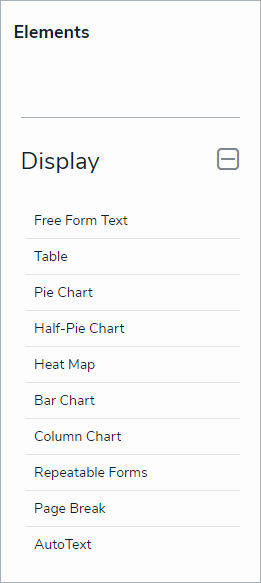 The Elements section.
The Elements section.
- Drag and drop Heat Map from the Elements section to the Report Canvas.
- Select a data series from the Select a data series dropdown menu, then click Done. The data definition selected here will determine which object types you can choose to display in the heat map.
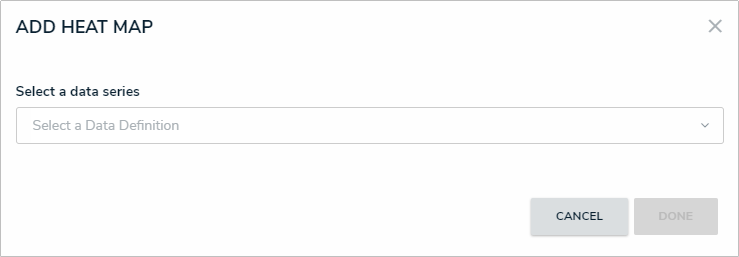
Selecting a data series. - Choose the data types you'd like to display in the heat map from the Data Type tab. Selecting LIBRARY DATA will include object type data, while selecting an Assessment Type will include the assessment name and workflow state. By default, all data types are selected. To make individual selections, deselect the Select All checkbox, then click the data type(s) you wish to include.
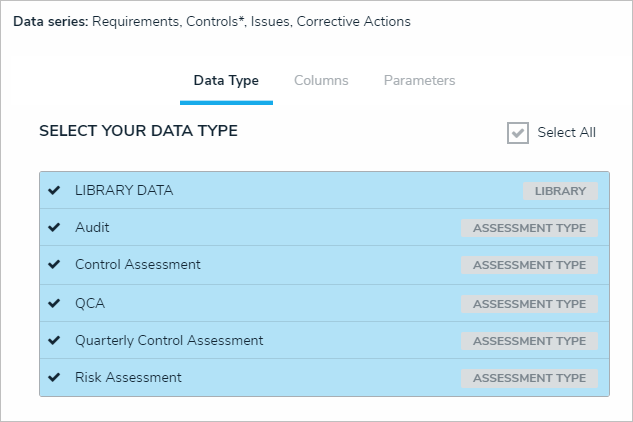 The Data Type tab.
The Data Type tab.
- Click the Configure Your Chart tab.
- Choose either the anchor or an object type in the data path from the Select a Relationship dropdown menu. The options in this dropdown menu will vary depending on the definition selected as the data series in the step above.
 Selecting which object type's data will appear in the heat map.
Selecting which object type's data will appear in the heat map.
- Choose a select list or formula saved to the object type from the X-Axis and Y-Axis dropdown menus. These selections will populate the cell labels in the X (bottom) and Y (left) axes on the report.
Heat maps with a single data point display pills on the map based on the object type's monogram color, if any. - Click Regenerate Heat Map in the Configure Colors section to show a preview of the heat map.
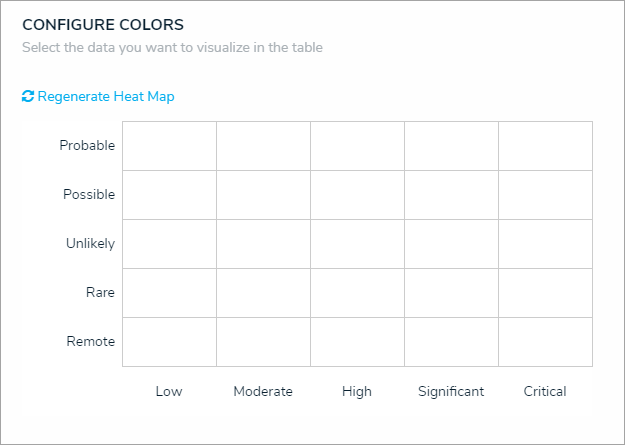 A preview of the heat map.
A preview of the heat map.
- To adjust the cell colors:
- Click a cell to display the color picker.
- Enter a hex color code in the text box or select a preconfigured shade from the Palette section.
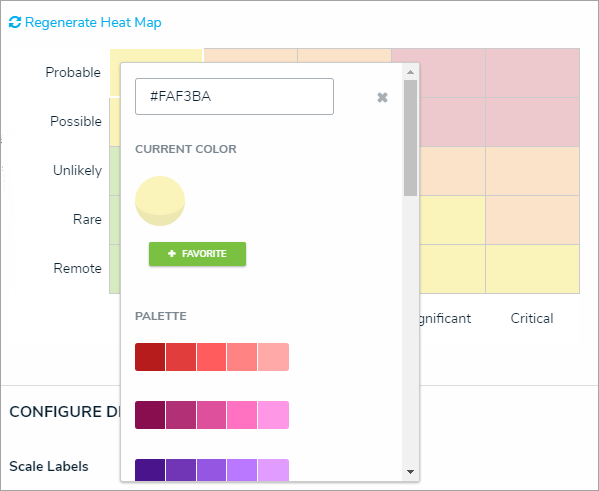 The heat map color picker.
The heat map color picker.
- Optional: Click + Favorite to save the color. Up to ten colors can be added and can be accessed when configuring the settings for all heat maps in your organization. To remove a favorite color, click it, then click - Favorite.
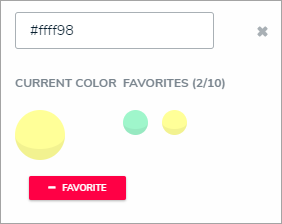 Favorite colors. Up to ten can be added.
Favorite colors. Up to ten can be added.
- Click the x or click outside the picker to close it, when finished.
- To reset the cell colors to their defaults, click Regenerate Heat Map.
- In the Scale Labels section, select either Field and Label Names to display the name of the select list or formula chosen in step 7 above alongside the cell labels, or select Label Names Only to display the options or formula labels only.
- In the Object Labels section, select the Unique ID (has decimals) option if you want to display the decimals of any assessment instances (e.g., 32.1). Select Library ID if you do not want decimals displayed (e.g., 32).
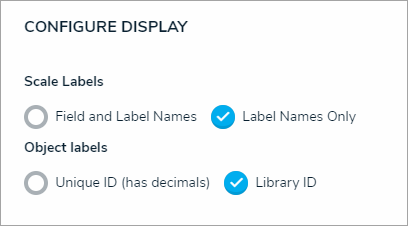 The Configure Display section.
The Configure Display section.
- From the Define Custom Forms dropdown menu, select which form is displayed when a user clicks on data in the heat map. These options are determined by the object type selected in the Select a Relationship dropdown menu above. Choosing Default will display the form selected in the user’s role permissions for the object type.
- Click Done when finished.
Once you're done adding elements and configuring your report, you must add it to a report view to make it available to end-users. See the Views Overview and Create a Report View articles for more information.
 icon beside Display.
icon beside Display.






